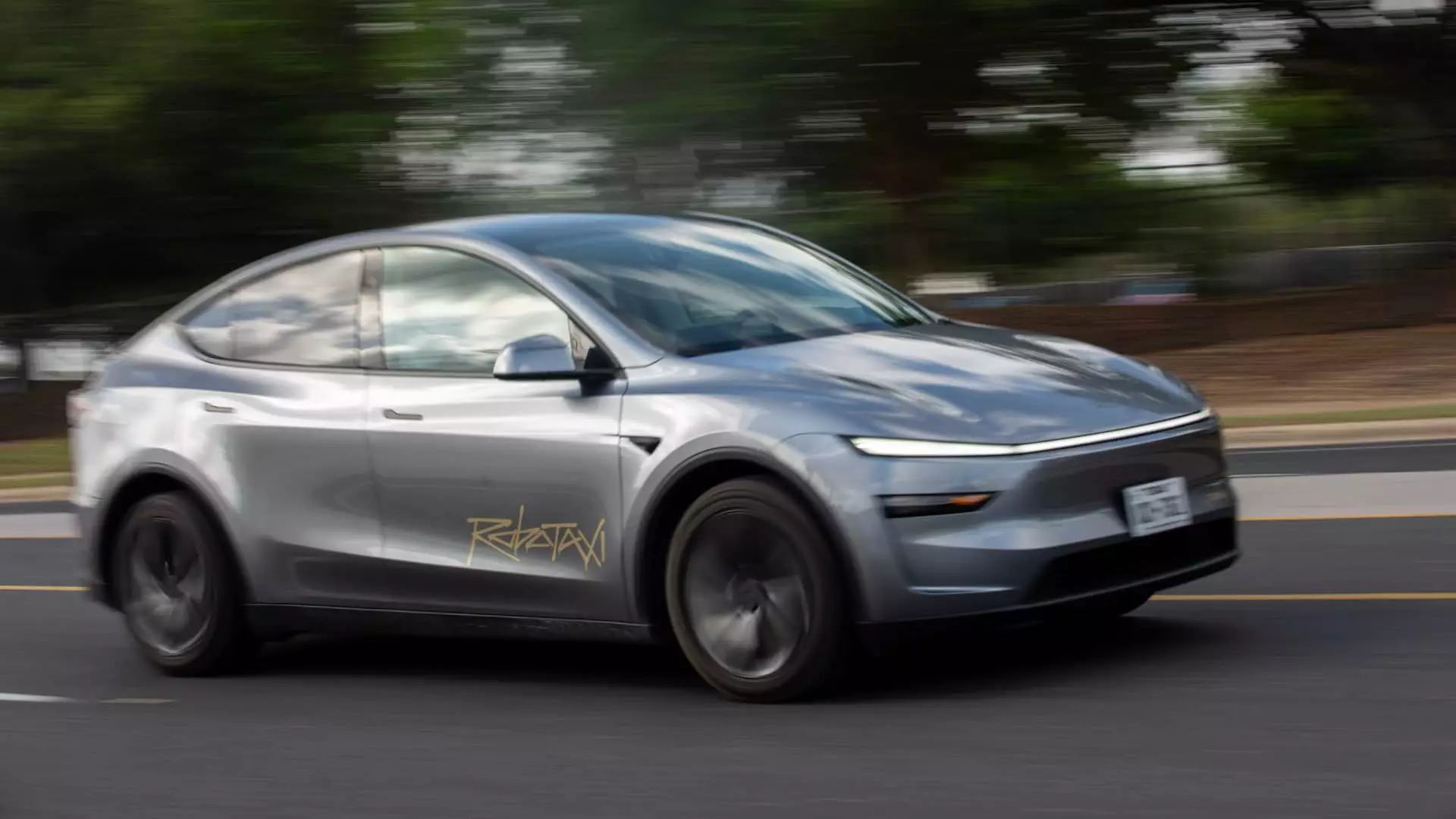Tesla’s recent dream of deploying its robotaxi service across the United States, particularly in the famously competitive and tightly regulated California market, exposes a disconnect between technological aspiration and legal compliance. CEO Elon Musk’s enthusiasm for expanding autonomous vehicle services appears to outpace the pragmatic regulatory landscape that governs public safety and consumer protection. While Musk touts this service as a groundbreaking step toward a driverless future, the reality remains that the legal environment demands a cautious, incremental approach—one that Tesla is, at best, struggling to navigate.
Attempting to portray Tesla as a leader in autonomous mobility projects a bold vision, but the truth lies in the stringent constraints imposed by state regulators. California’s Public Utilities Commission (CPUC) unequivocally states that Tesla cannot use its autonomous vehicles on public roads for fares or passenger transport without an onboard human driver. This regulatory stance is not a mere bureaucratic obstacle but a necessary safeguard against unproven technology risking public safety. Musk’s ambitious rollout without proper clearances suggests a desire to leapfrog regulations—a risky game that could erode public trust if not handled transparently and responsibly.
Moreover, Tesla continues to operate under a permit that only allows private, drivered transportation—akin to a limousine service, not a fleet of robotaxis. Their plans to extend operations to friends and select members of the public still fall under these restrictions. This is a clear indication that despite the CEO’s high-profile promises, Tesla’s “robotaxi revolution” remains, at heart, a controlled experiment—not a commercial product. The company’s narrative seems to be more about marketing bravado than adhering to the foundational legal structures designed to protect consumers and public interests.
The Chasm Between Public Relations and Regulatory Compliance
Tesla’s public communication often inflates the progress of its autonomous driving projects. Reports of a rapid expansion into the Bay Area, despite regulatory constraints, suggest a disconnect between Tesla’s corporate messaging and regulatory realities. Internal memos allegedly reveal Tesla’s internal confidence or perhaps overconfidence about rolling out a service that the law currently forbids. This raises critical questions about transparency and the company’s respect for regulatory authority.
Tesla’s approach appears to prioritize spectacle—showcasing seemingly autonomous vehicles cruising with minimal supervision—over the responsible, phased development that safety regulators advocate. The company’s use of “early access programs” and invited test users masks a vehicle deployment that is still very much experimental and limited in scope. The danger here is not just legal; it’s reputational. Musk’s bold claims could backfire if Tesla’s vehicles, once deployed en masse without compliance, cause accidents or generate public safety concerns.
Furthermore, the regulatory hurdles aren’t merely technical; they expose a fundamental flaw in Tesla’s strategy: an underestimation of the importance of public trust and community involvement. Regulators are not obstacles for innovation but essential gatekeepers ensuring that technological advances do not compromise safety. Ignoring these deeply rooted legal frameworks risks alienating local communities and losing their support, which are crucial catalysts for mainstream adoption.
The Lingering Gap in Safety and Transparency
Tesla’s marketing of its autonomous features continues to blur the line between driver assistance and fully autonomous operation. The company’s portrayal of features like FSD (Full Self-Driving)—now called “FSD Supervised”—as capable of hands-free operation clashes with regulatory warnings and public safety standards. Authorities like the California DMV argue that Tesla is misleading consumers by suggesting their vehicles can operate autonomously without a driver ready to intervene.
This misrepresentation not only jeopardizes consumer safety but also undermines Tesla’s credibility. Regulatory agencies are rightfully demanding clarity—that drivers must remain engaged in controlling their vehicles. Tesla’s propagandistic videos showing users relaxing with their hands off the wheel are a dangerous distortion of reality. If a licensed vehicle is marketed with the promise of safety and autonomy, but in practice requires a human driver at all times, then the company is engaging in deceptive marketing—an ethical lapse with potential legal repercussions.
The ongoing dispute over whether Tesla has overstated its capabilities reflects a broader failure to communicate transparently with consumers and regulators alike. This opacity hampers informed decision-making, erodes trust, and could lead to stricter enforcement actions or even suspension of their licenses to sell vehicles with advanced driver-assist features.
The Broader Implications for the Future of Autonomous Mobility
Tesla’s push into robotaxi territory is emblematic of a broader industry struggle: the tension between technological ambition and the slow, cautious pace that regulation rightly embodies. Companies like Waymo have secured more permits, demonstrating that regulatory compliance, not expedience, is paramount for sustainable growth in autonomous mobility. Their careful, incremental deployment contrasts sharply with Tesla’s more cavalier approach, which seems motivated by a desire to dominate markets and headlines.
If Tesla is allowed to proceed unchecked and prematurely expand its robotaxi services, it risks a public backlash rooted in safety failures and broken promises. Conversely, a more engaged, transparent collaboration with regulators could foster innovations that are both cutting edge and legally sound. This balance is essential—not just to avoid regulatory repercussions but to build consumer confidence in autonomous vehicles.
Tesla’s current trajectory, rooted in political bravado and marketing hype, risks catastrophic setbacks if the underlying technology doesn’t meet rigorous safety standards. The company’s success will depend less on its ability to tout shiny new features and more on its willingness to operate within the boundaries that safeguard public interest and trust. Only then can true innovation in autonomous mobility be achieved—not through reckless expansion but through responsible progress that aligns technological prowess with legal and ethical accountability.

